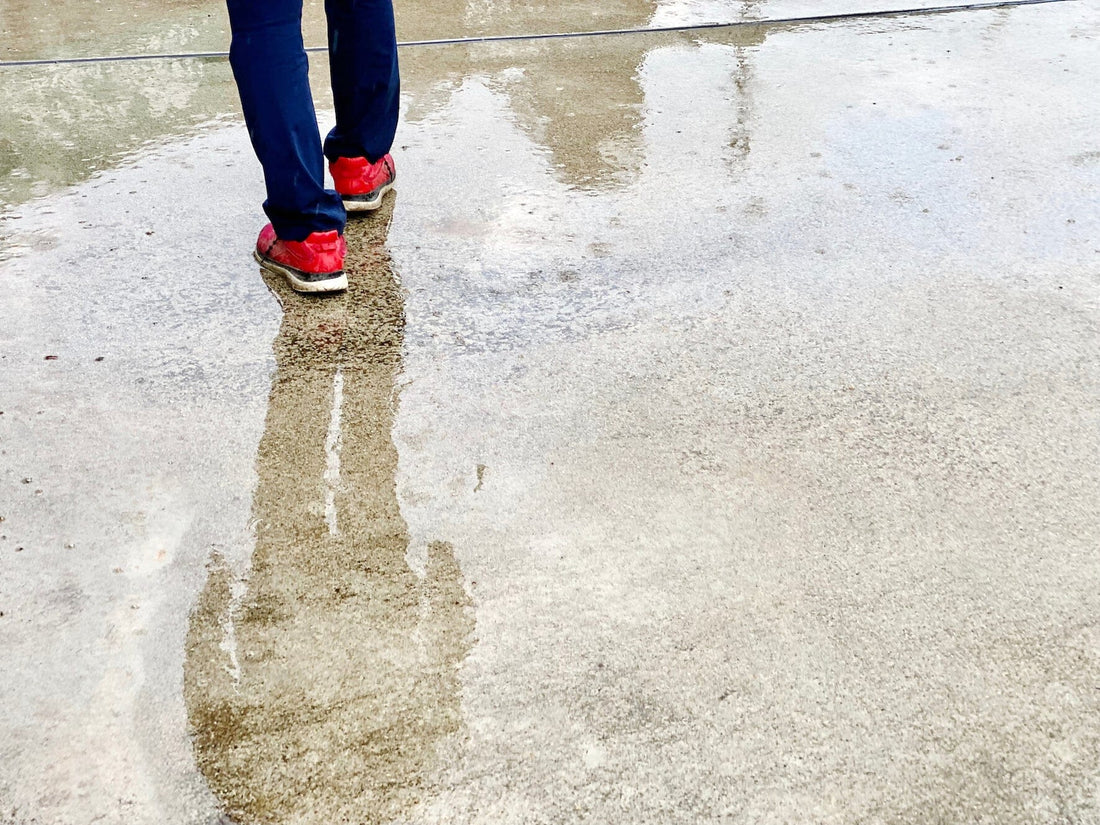Postural sway, also referred to as the “ADHD walk,” refers to your body's horizontal balance-seeking movements to stay upright. Though postural sway is a typical component of balance, it is said to be increased in people with attention disorders because of issues with motor control.
Learn more about what characterizes postural sway, how ADHD is related to this type of movement, and what you can do to get help for yourself or your child.
What is the ADHD Walk?
Postural sway refers to the subconscious maintenance of posture through movements around your center of gravity. If you close your eyes while standing in place, you might feel your own postural sway as your muscles and sensory system recalibrate to keep you stable and upright.
Though everyone experiences postural sway to a certain degree, the reason it is sometimes called the “ADHD walk” is because there is a correlation between lack of motor control and ADHD, which may lead to increased postural sway.1 A person with increased postural sway might move more when standing, either gently rocking from side to side, or in small circles, even if their feet remain flat on the ground.
Is it a Real Concern?
For some people, the tiny movements associated with postural sway are unnoticeable. But, for others, increased postural sway can put them at risk for injuries, social withdrawal, decreased physical activity, and increased anxiety.2
Anxiety also has a reciprocal relationship with postural sway. While fear of injury might cause anxiety in a person with greater postural sway, anxiety itself also a contributing factor to the motor issue.3
While increased postural sway may be an indicator of ADHD or anxiety, it is also related to autism, dyslexia, and some neurological diseases, such as Parkinson's disease.

Does ADHD Cause Gait and Postural Sway Problems?
Brain imaging studies have confirmed that increased postural sway is associated with larger cerebellar regional volume in posterior motor areas, an area of the brain involved in the pathophysiology of ADHD.4 This may also affect the gait of people with ADHD. Research has shown that children with ADHD walk with higher gait variability compared to typically developing children, indicating a less regular walking pattern.5
While not all people with ADHD will experience greater postural sway or a less regular walking pattern, how ADHD affects the sensory system puts them at risk. The prevalence of motor problems in children with ADHD ranges from 30 to 52 percent.6 And studies show such motor issues and balance-related challenges may extend to adulthood.7 It’s not uncommon for adults with ADHD to describe themselves as “clumsy” or “uncoordinated.”
What is Proprioception?
Proprioception, or kinesthesia, refers to your body’s spatial awareness. It’s the sense that allows you to perceive the location, movement, and action of different parts of the body. Some experts say that children with ADHD have proprioceptive issues due to decreased visual perception.8 This may be why some kids with ADHD have trouble with boundaries when playing or interacting with others.
Children with ADHD often have sensory processing difficulties.9 This may lead to sensory-seeking behavior like pushing or fidgeting, poor motor planning like difficulty ascending stairs or bumping into people, and poor postural control altogether, all signs of proprioceptive dysfunction.
How to Improve ADHD Walking
There are a number of actions you can take to improve ADHD walking in adults and children. Enrolling in a physical activity program focusing on balance training and motor control can lead to significant improvements in executive function and postural sway.10 This type of program can help increase body awareness while practicing postures and movements to support your center of gravity.
Having a regular exercise routine can also help strengthen body awareness, especially routines that focus on core strength and body balance.11, 12 (Explore these fun workouts for kids.)
Seeking help from an occupational therapist or physical therapist can also help you devise a plan to improve your postural sway or your child’s.
Medication Treatment for ADHD Walk
While there is no specific medication for “ADHD Walk,” there are a few options to consider. Some studies indicate treatment with stimulant medication like methylphenidate may improve both motor performance and attention in children with ADHD and developmental coordination disorder (DCD), a developmental disorder marked by clumsiness in otherwise healthy kids.13 However, stimulant medication like methylphenidate is associated with a number of side effects such as irritability, insomnia, dizziness, loss of appetite, and nausea.14 The higher the dose, the more likely you or your child will experience such side effects.
As an alternative to stimulant medication, consider taking the homeopathic medication Brillia. Containing targeted antibodies to the brain-specific S100B protein, Brillia has been shown to reduce symptoms associated with ADHD without harsh, synthetic chemicals or harmful side effects.
The S100B protein is an important regulator of many different intracellular and extracellular brain processes. Almost all mental and neurological diseases (as well as temporal stress-induced conditions) are accompanied by disturbance of these processes and Brillia helps to normalize them, consequently reducing symptoms like inattention, hyperactivity, impulsivity, and restlessness without affecting any other systems in the body. Even more, some research has indicated that using a neutralizing anti-S100B antibody may induce significant improvement in sensorimotor performance as well as memory retention.15
If you or your child are already taking a prescription medication for ADHD, Brillia can be added to your regimen without worry in lieu of increasing your current dosage. Learn more about taking Brillia with prescription medication.
If you suspect you or your child are struggling with postural sway or balance issues, it’s always a good idea to check in with your doctor to rule out any other conditions and to devise a treatment plan that works best for you.
Get a whole bunch of support right in your inbox.





